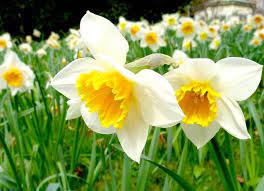**Elevating Joy and Easing Stress: The Therapeutic Influence of Flower-Shaped Cat Trees**

—
Our feline companions, with their playful spirits and discerning natures, thrive in environments that cater to their psychological well-being. Enter the world of flower-shaped cat trees – not just visually pleasing, but powerful agents in reducing stress and enhancing joy for our beloved cats. Let’s explore how these whimsical structures contribute to the overall happiness of our feline friends.
**1. **Stress Reduction through Vertical Exploration:**
– *A Safe Haven:* Flower-shaped cat trees provide vertical spaces that mimic the safety of trees in the wild. Cats, instinctively seeking high vantage points for surveillance, find solace and reduced stress when they can observe their surroundings from an elevated perch.
**2. Interactive Engagement:**
– *Playful Diversions:* The dynamic features of flower-shaped cat trees, such as climbing vines, multi-petal platforms, and hidden compartments, offer endless opportunities for interactive play. Engaging in play activities provides a positive outlet for energy, reducing pent-up stress.
**3. Private Hideaways for Relaxation:**
– *Cozy Retreats:* The secluded nooks and crannies within flower-shaped cat trees create private hideaways. Cats, being creatures that appreciate moments of solitude, can retreat to these cozy spaces for relaxation, away from potential stressors.
**4. Satisfying Scratching Urges:**
– *Natural Behaviors:* The incorporation of sisal rope and textured surfaces on flower-shaped cat trees satisfies a cat’s natural instinct to scratch. This not only promotes healthy claws but also serves as a stress-relieving activity.
**5. Biophilic Enrichment:**
– *Nature-Inspired Tranquility:* Flower-shaped cat trees that integrate planters or floral motifs bring elements of nature indoors. Biophilic enrichment has a calming effect on cats, fostering a sense of tranquility and reducing stress levels.
**6. Relaxation in Luxurious Lounges:**
– *Orchid-Inspired Comfort:* Lounges inspired by orchids or other flowers provide cats with plush and luxurious resting spaces. These comfortable spots contribute to relaxation, easing tension and promoting a positive emotional state.
**7. Aromatherapeutic Effects:**
– *Catnip or Valerian Bliss:* Flower-shaped cat trees that include catnip or valerian-infused elements offer aromatherapeutic benefits. These scents can induce a state of euphoria, creating a joyful and stress-free experience for cats.
**8. Playful Interaction with Dynamic Elements:**
– *Toys and Play Features:* Flower-shaped cat trees often include interactive toys and dynamic play elements. Engaging in play activities not only provides physical exercise but also stimulates the mind, reducing stress and promoting mental well-being.
**9. Strengthening the Bond through Shared Spaces:**
– *Companionship and Connection:* Placing flower-shaped cat trees in communal areas strengthens the bond between cats and their human companions. Sharing spaces fosters a sense of togetherness, providing opportunities for positive interaction and mutual joy.
**10. Personalized Comfort and Adaptability:**
– *Customized Retreats:* Flower-shaped cat trees often allow for customization. Creating spaces tailored to a cat’s preferences ensures they have personalized retreats that cater to their unique needs, further enhancing their comfort and joy.
In conclusion, flower-shaped cat trees go beyond being mere pieces of furniture; they become therapeutic havens for our feline friends. By addressing their natural instincts, providing engaging spaces, and offering moments of tranquility, these structures play a vital role in reducing stress and enhancing the overall joy of our cherished cats. Embrace the beauty of this harmonious blend of design and well-being, creating an environment where your cat can flourish both physically and emotionally.


